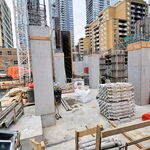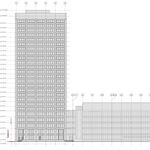To get a sense of how much time could be saved by fixing up the tracks between, I made a quick model of the line assuming linear 0.3 m/s/s acceleration and 0.6 m/s/s deceleration
Here's the existing conditions:
View attachment 505554
I looked at a few scenarios:
- Fix up the tracks from the Rideau River to Ottawa Station to be 60 mph instead of 45 mph, which is already possible with the existing alignment.
- In addition, get the Rideau River bridge up to 50 mph, which was its historical speed according to
@crs1026.
- Get the whole thing up to 80 mph somehow, which would include lots of infrastructure work namely a new bridge.
For each option I also separated out a sub-option where the limit within Ottawa Station is raised to 20 mph rather than 10 mph.
View attachment 505556
The main takeaway here is that there are diminishing returns as track speeds increase. The biggest bang-for-the-buck appears to be fixing up the Ottawa Station rail corridor to allow 20 mph, since that saves nearly a minute with what is presumably only signal work. Replacing the bridge with a new alignment doesn't seem like a worthwhile expense given that most of the savings can already be achieved with the existing alignment which would be orders of magnitude cheaper to upgrade.
So my preference would be to upgrade the existing alignment to its fullest (highlighted).





